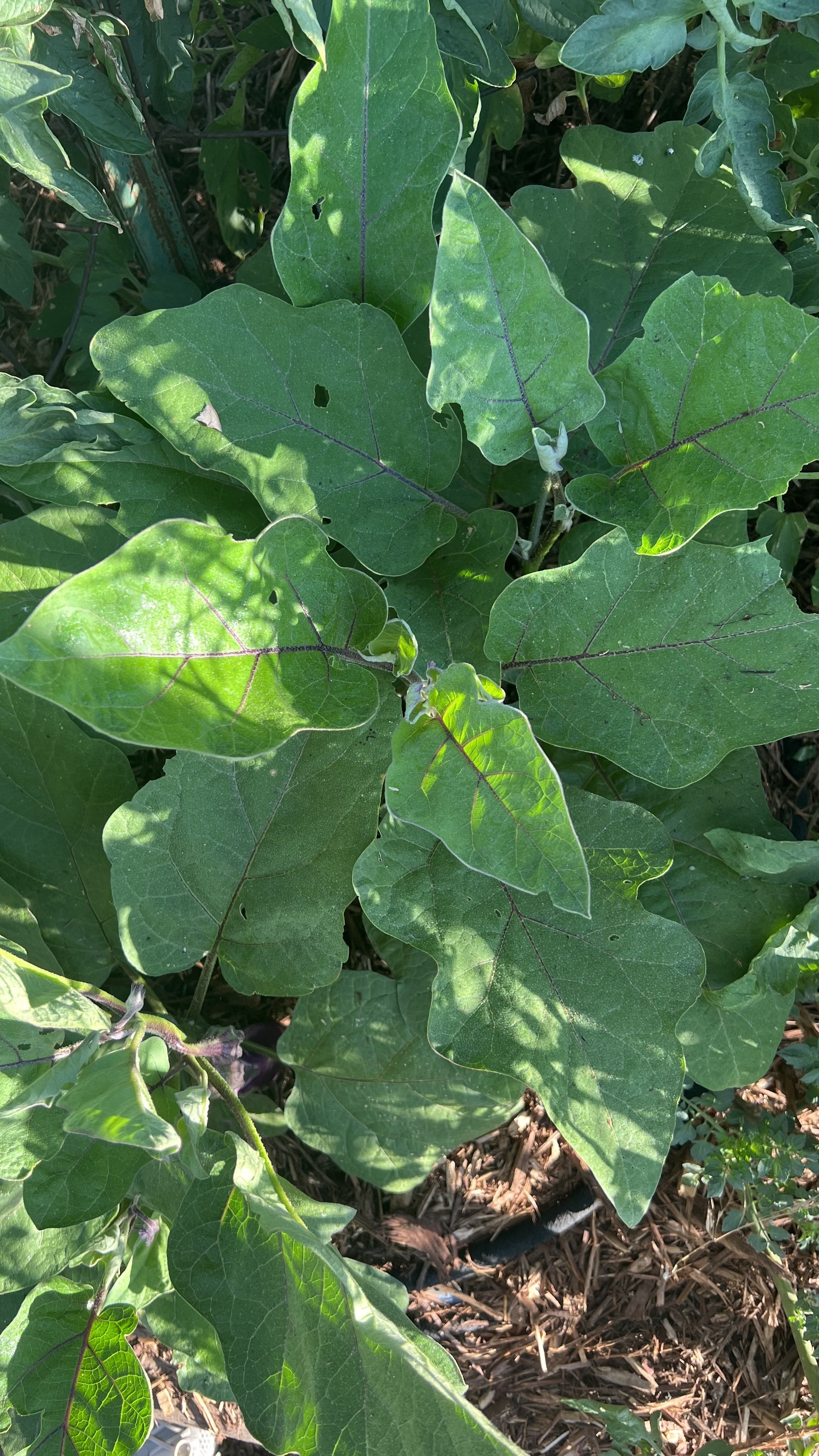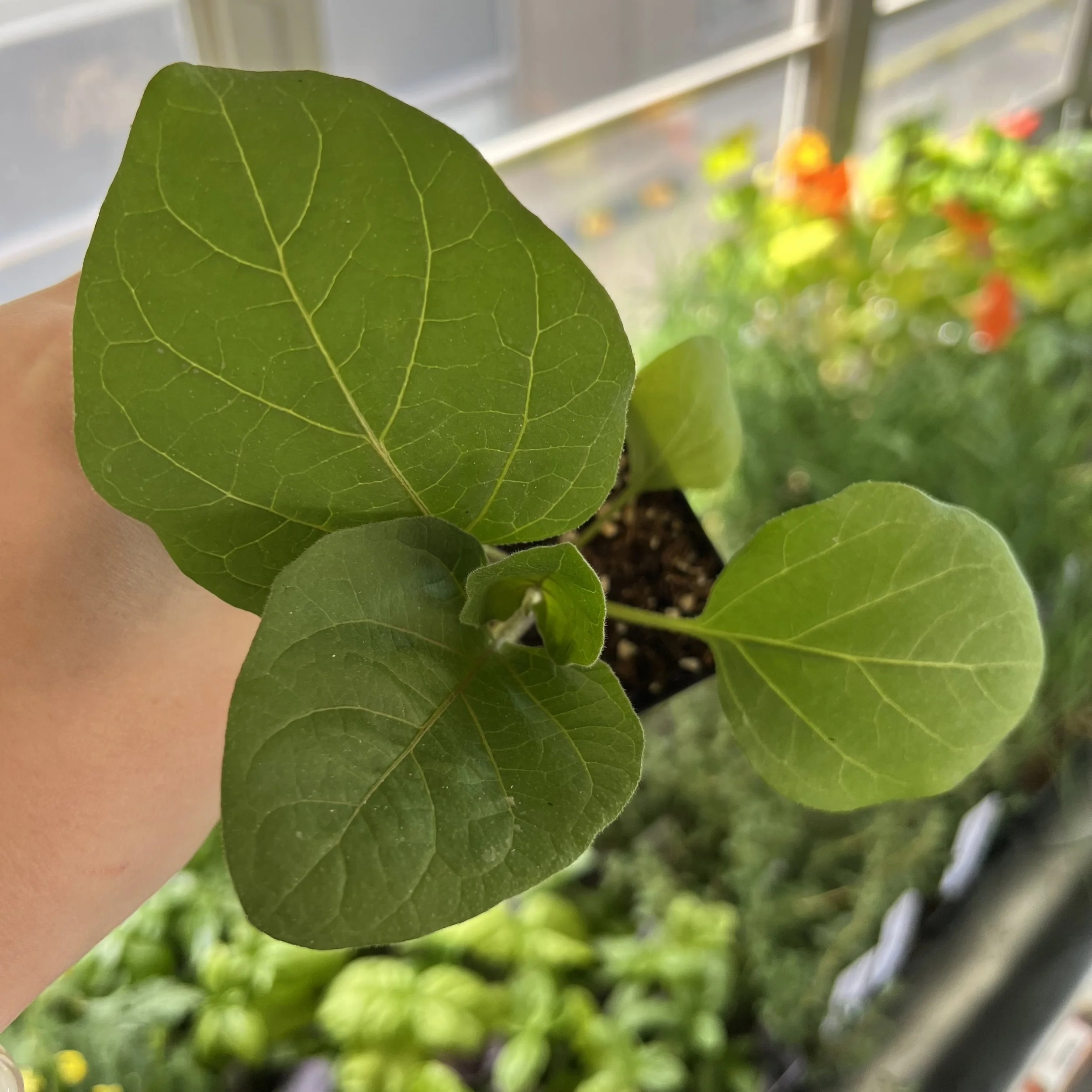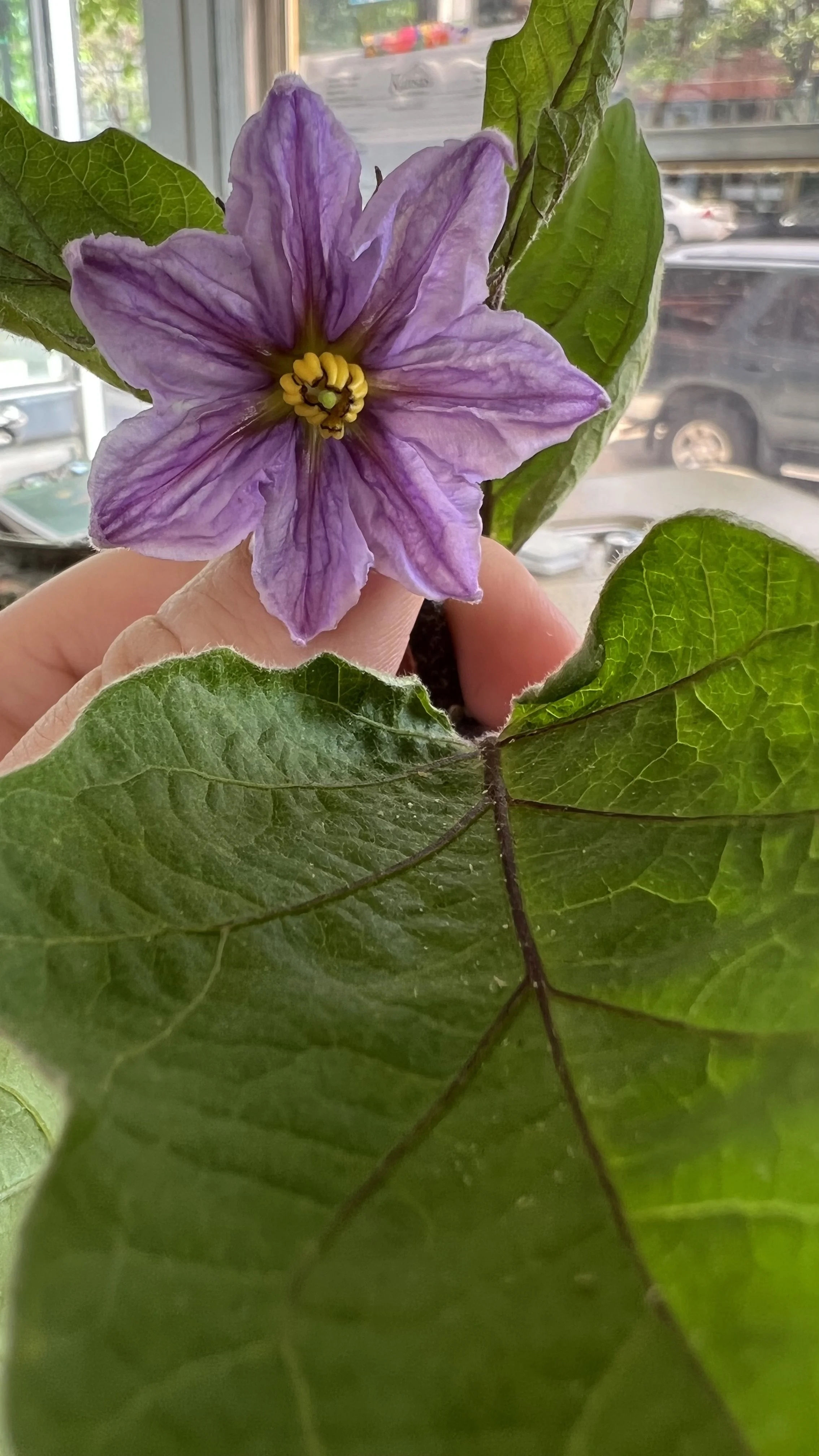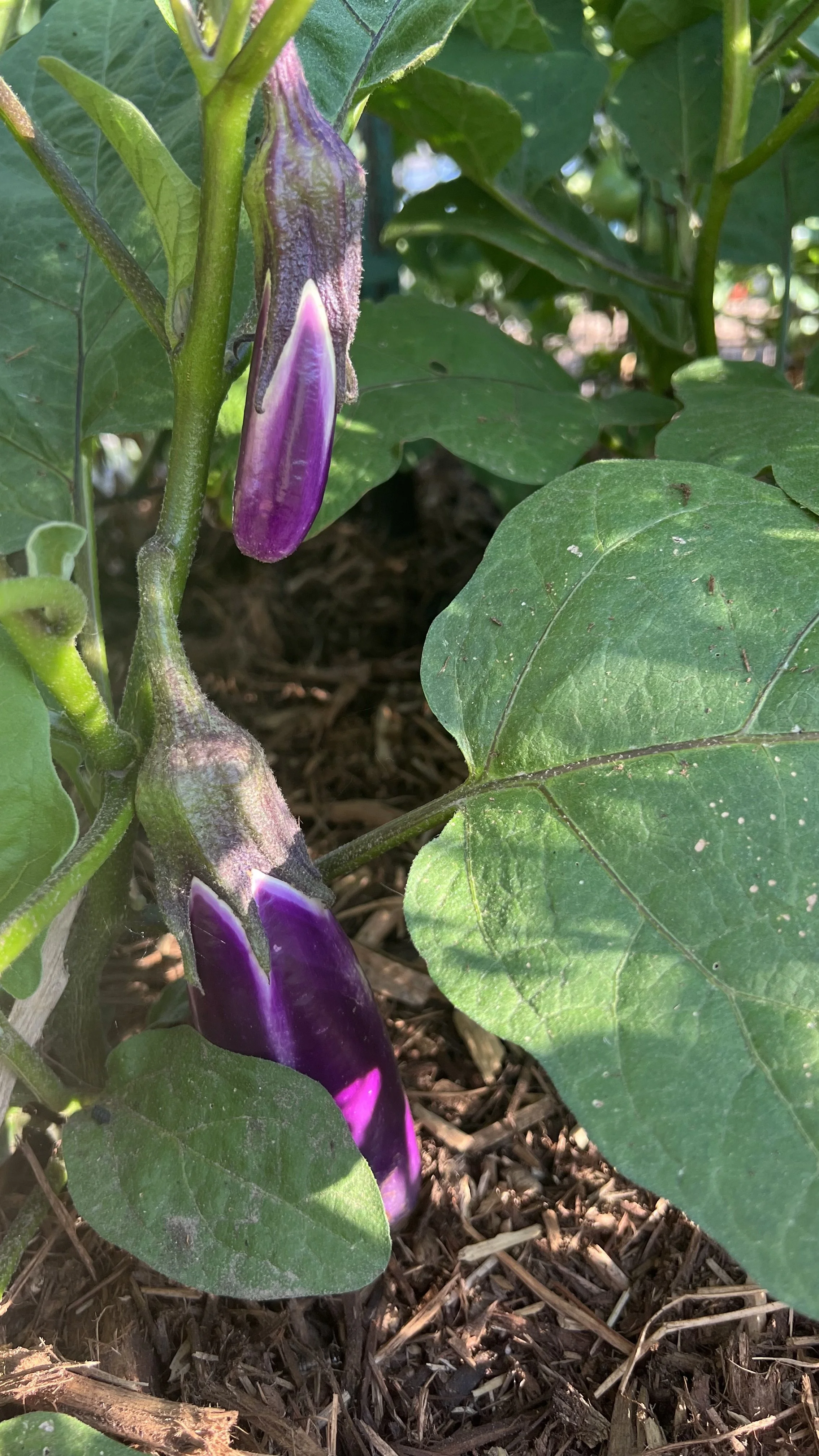
Eggplant
Solanum melongena
-
When to Plant: Plant eggplant after the last danger of frost has passed. Plants will do better as days become more consistently warm. Harden off young plants by placing them outdoors a few days before planting.
Click here to find your frost dates.
Light: Full Sun
Soil: Well-drained soil is best, but eggplant can tolerate heavier soils. If planting in a container, use general-purpose potting mix.
-
Water deeply when the top 3-4” of soil or potting mix is dry.
-
If planted in a container, try a slow-release fertilizer for easy care, following the recommended bottle rates. Sometimes, potting mixes incorporate slow release fertilizer that lasts for 6 months.
If planting in ground, fertilize with a side dressing of granular fertilizer when first planting in the garden and again when plants begin to set fruit. After fruit set begins, fertilize every 2-4 weeks. Watering the granular in deeply after each application.
Eggplants are similar to peppers and tomatoes, avoid using high levels of nitrogen by selecting a fertilizer such as 5-10-10 to support foliage without inhibiting fruit set.
-
Harvest eggplant when they reach a ripe color and size. If allowed to set on the plant too long, they can turn touch and mealy.
Knowing when to harvest eggplant is something that you gain experience in over time.
-
Eggplants are safe outdoors above freezing. However, they thrive in temperatures from 75-95 F. Too little or too much heat can cause lack of fruit set.
Eggplant actually has thorns that run along the midrib vain of the plant. Watch out! Haha!





